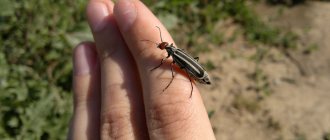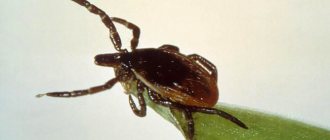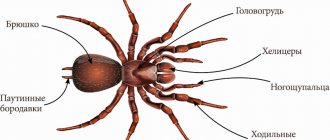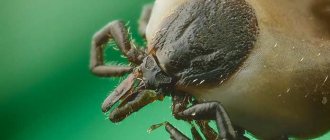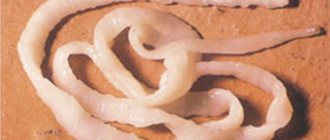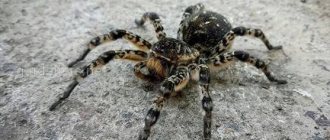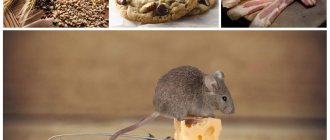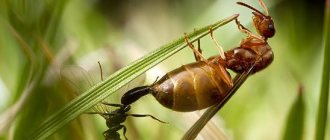Spiders are amazing creatures that evoke fear and delight at the same time. They hold the record for the number of phobias among people and help in pest control. Their venom can be either harmless or deadly. Knowing which types of spiders in Russia are dangerous and which, on the contrary, will help you get rid of phobias and be more careful where required.
- The main families in the country Wolves
- Hunters
- Funnel
- Horses
- Cibeids
- Diggers
- Black widows
- Steatodes
- Knitting spiders
- Orb weavers
- Jumping spider
- Silver spider
- Karakurt
- South Russian tarantula
- Digger spider
Main families in the country
The territory of our country includes a variety of climatic zones and natural conditions in which many representatives of arachnids exist. Spiders in Russia impress with their features and amazing life, they frighten with their appearance and help people. Many of them are rare and are listed in the Red Book.
Wolves
The Latin name - Licisidae, is a representative of a vast species, numbering more than two thousand species. It has a gray, brown or brown color, an average body size of 3 cm, and has a “standard” structure. The wolf spider has no blood; it is replaced by hemolymph, a nutritious fluid that circulates in the body. In case of injury, the hemolymph flowing from the wound acquires a blue tint.
Licisidae is a dangerous predator and an assistant to amateur gardeners in the fight against harmful insects. Its diet consists of flies, midges and insect larvae. Representatives of this species are very cunning; in the event of a threat that they cannot cope with, they prefer to pretend to be dead. The spider falls belly up and lies in this position until the threat passes. They are semi-venomous spiders whose bite does not cause harm to health.
Hunters
Latin name: Heteropoda, family Sparassidae. You definitely can’t call a hunter’s spider a standard one. It has an amygdala-shaped body, 2 to 4 cm long, and very long legs, the length of which can exceed the length of the body up to four times. The longest legs are the front ones. Color varies from mustard to red-brown. The hunter is active at night and hides in dry branches, hollows and tree bark during the day. The maximum lifespan is three years, during which time Heteropoda is able to molt up to 12-15 times. The molting period is easily determined visually: the paws become very dark.
Funnel
The Latin name is Agelenidae, there are more than 1000 species. The funnel spider got its name because of its special web, which it weaves in the shape of a funnel or pipe. It serves as a reliable shelter and trap for other insects. Every three to four weeks the spider changes its location and builds a new labyrinth. An adult male grows up to 2 cm, females are slightly larger. The color is mainly brown or black. Agelenidae live in grass. They can be easily distinguished from other species by their characteristic, swaying mode of movement. Spider venom is harmless to humans.
Horses
The Latin name is Salticidae, there are about 6000 species. They are quite fluffy representatives of arachnids. Males and females differ in color: the main color of the female is gray or orange, the male is black. Each individual has a characteristic pattern in the form of spots and stripes. The jumping spider is an active daytime hunter. He does not wait, but acts: when he sees potential prey, he jumps and grabs it. The web is used to construct protective nests for eggs and as insurance during a jump. Because of its ability to jump, it is called a jumper and a grasshopper. This species is absolutely harmless and does not even bite on contact.
Cibeids
The Latin name is Argeroneta aquatica - silver spider. The only species of spider that can live underwater. Their peculiarity is the construction of underwater houses - tents, the dome of which they fill with air. Special hairs on the body allow you to form an air sphere and carry it with you under water. Among the representatives of this species of arachnids, equality reigns: females do not eat males. Silverfish overwinter under thick ice, in their houses or empty shells.
Diggers
The Latin name is Atypus affinis, a family of digger spiders. It grows up to 2 mm, has a dark, “earthy” color. The mole rat got its name because of the characteristic feature of the same name. The spider breaks a hole in the ground, up to 40 cm long, covers it with cobwebs, bringing the weaving out. Thus, a tube of web is obtained, the end of which is sealed, and the spider itself is inside and awaits the victim. If the hunt is successful, the web tube breaks through and the victim is carried inside. Afterwards the hole is “patched”, and the spider again takes a wait-and-see position.
Black widows
Latin name - Latrodectus mactans - black widow. The name of this species has become a household name due to the characteristic behavior of the females. The spider lives its entire life in the same web, which it impregnates with pheromones to attract suitors. Partners do not keep you waiting. The very first male to enter the territory of a dangerous female begins to “punch” her web to remove the smell of pheromones in order to avoid competition.
If the black widow does not like the groom or is hungry at the time of the meeting, the female immediately eats the potential partner. If contact is established, then the moment of eating is postponed only until mating. The body diameter of females is 1 cm, males are half as large. The legs of a dangerous spider are five times longer than the body. The color is black, glossy, and there is a “mark” in the form of a red spot on the abdomen.
They live mainly in the south. For example, in the Astrakhan region or Krasnodar region.
The black widow is considered one of the most dangerous spiders in the world. Aggressive females helped the species earn this reputation. In case of the slightest provocation and aggression, a lightning attack and a poisonous bite follows. Black widow venom contains a powerful neurotoxin. It causes respiratory arrest, severe joint and muscle pain, and cramps. Scientists have found that the concentration of neurotoxin in black widow venom is 15 times higher than that of a rattlesnake.
If you are bitten, you should immediately go to the hospital. The issue of providing timely assistance is a matter of life and death.
Steatodes
Latin name: Steatoda grossa. The spider is characterized by sexual differences: females reach 1-1.2 mm in length, while males are half as much. The color is dark brown and black. There are oval spots on the chest, pink-red in females and white in males.
Steatodes' favorite habitats are forests and bushes; they often coexist with villagers. Their love for “tree” shelters pushes them to be close to people. The crevices of wooden private houses and fences provide excellent shelter, and garden plots are the best place for hunting.
The web of the steatode is distinguished by its horizontal arrangement and large size, which reaches 1.5 meters. A spider bite is not fatal, but can be very harmful: it causes fever and temporary paralysis. Spiders are not aggressive, but you shouldn’t irritate them too much.
Knitting spiders
Latin name: Tetragratha. Individuals are predominantly gray in color, with a brown stripe on the abdomen, and differ from their counterparts in their elongated body structure, similar to that of an ant. The knitter's thin body carries long legs that can be folded in half. The body length of an adult female varies from 7 to 12 mm, of a male – 6-8 mm. The length of the limbs exceeds the length of the body three times.
The habitat is the area near water bodies and the sea coast. The knitter's web is directed vertically and is aimed at catching flying insects: flies, mosquitoes and midges. Representatives of this genus are absolutely harmless to humans. There are known cases of mass invasion of the species, as a result of which coastal and agricultural areas were covered with webs.
Orb weavers
Latin name – Araneidae. One of the largest families of arachnids, includes more than 3,000 species. The size of an adult spider reaches 8 mm, it is brown in color and has a striped pattern on its abdomen. Orb weavers are distinguished by a rounded abdomen and dark color at the end of the legs. Despite its small size, the hardworking orb weaver is capable of weaving a web with a diameter of up to two meters. The most famous representative of the species is the cross spider. The bite of such a spider causes only pain, similar to a bee sting.
The most popular representatives
Represented by a large number of representatives. Each spider is endowed with certain capabilities and is perfectly adapted to life in its region. Due to the fact that climate change has been observed over the past decade, the geography of arthropod habitats is changing. Species that previously occupied only certain regions migrate and colonize new territories.
Jumping spider
The jumping spider is found throughout Russia and is considered one of the best helpers for gardeners. Its advantage is the inability to bite through the human body. You can keep such a spider on your site to combat garden pests. It is enough to catch several individuals and plant them in a garden bed or under a tree. The horse will not be confused - it will immediately begin to spin a web and settle in a new place.
Pisaurid
They live in Siberia and the Far East. This species is predominantly characterized by gift-giving during the courtship period. The male, when preparing to meet his beloved, carefully packs the caught flies or midges into a cobweb cocoon. This offering reduces the chance of being eaten and increases the chance of mating.
Crosses
Crossweeds are one of the most common species of the orb weaver family. They live throughout the Russian Federation, make a great contribution to the fight against harmful insects and easily adapt to a new place of residence.
Recluse spider
A tiny spider, no more than 8 mm in size, with a leg span of up to 2 cm. A distinctive feature of the cross spider is its wide legs and a striped, elongated body, with a characteristic cross-shaped pattern. Color varies from brown to dark brown.
The hermit spider weaves its web randomly, as necessary. It is formed by careless and chaotic movements during the weaving process. The hermit's bite is not fatal. But its poison contains substances that strongly break down the skin, which threatens tissue necrosis (death).
In the central part of the Russian Federation
The central part of Russia is characterized by pronounced seasonality. The climate is mostly humid and is not suitable for all arthropods. The following spiders are found here:
Silver spider
The only underwater representative of the world of spiders, the popular name is dropsy. Lives in bodies of water with standing water. The silverfish species are small spiders up to 15 mm in length, brown in color. Since dropsy is the only spider that is found on the surface of lakes and ponds, it cannot be confused with anyone else. If you disturb such a resident of a body of water, you may get a bite. Its venom is not dangerous to humans; the result of a bite is pain near the bitten area, which disappears in a few days.
Heiracanthium
Heiracanthium is the Latin name for the green spider in Russia. Popularly called sak or yellow-bag. The places where saka is distributed are Crimea, Krasnodar Territory, Rostov Region - it loves warm regions. Climate change is contributing to its emergence throughout the central part of the country.
The abdomen is yellow or beige, the cephalothorax is often orange, the green spider grows up to 15 mm. Its color appears green against the background of the leaves, hence the name. Sak builds web sacs and has the ability to jump. It has large chelicerae and poisonous claws; the yellowjacket bites painfully. The first sensations from a Heiracanthium sting are similar to those of a bee - a sharp, severe pain. The consequences can be different - from a long-healing wound to nausea and an allergic reaction. Depends on the age and health of the person.
Knitting spider
Popularly called the grandmother's spider. It often settles with a person, occupying corners of the apartment, cracks behind furniture, and weaves its “classic” web. It grows up to 1 cm, has a light brown color and an elongated abdomen on long legs. The knitter is absolutely harmless; when meeting a person, he prefers to pretend to be dead: fold his paws and sit motionless until the threat disappears.
Camel spider - Camel spider
Camel spider photo
The camel spider has many names: phalanges, bihors, salpugs, barbers, barbers, wind scorpion. The body (5-7 cm) is slightly oblong, light and dark red, densely covered with long, thin hairs. The camel spider's body shape is similar to a scorpion, especially with its chelicerae (claws). With them he is able to bite through a human nail and even small bird bones. He also uses his chelicerae to trim hairs and feathers from his victims and place them in his home. The camel spider lives in the desert regions of Asia, Africa, America, and Europe. Phalanx spider is a nocturnal predator. It is practically omnivorous and carnivorous, feeding on various insects, rodents, and lizards. Camel spiders have eyes like scorpions: 2 compound eyes in the middle and one on each side of the cephalothorax. Compound eyes are highly responsive to movement, so these spiders are incredibly fast, up to 53 cm/s (1.9 km/h). The camel spider is not poisonous, but it does have an incredibly painful bite. And also on its chelicerae the remains of the tissues of the previous victim can rot, which can cause serious inflammation.
Steppe regions of Russia
The nature of the Russian steppes is inhabited mainly by dangerous and biting arachnids, the most common of which are:
Karakurt
The most poisonous spider in Russia, it lives in the Urals and the Caucasus, Crimea, the Black Sea region and the Moscow region. The bite of the karakurt is a double hole made by chelicerae. The spider will attack immediately if accidentally disturbed. Poison injected into the wound spreads throughout the body within 15 minutes. After this time, severe muscle pain, fever, increased sweating and tremors begin. If you are bitten, you should seek help immediately. The most aggressive are sexually mature females, who, in addition to the instinct of conservation, experience a natural feeling of the need to preserve offspring.
Pogrebnoy
He got his “nickname” due to his love of living in cellars and barns. In these buildings, he finds crevices and cracks in the wooden elements that are optimal for his habitation. The spider is small, the average size is 10 mm. The head is colored brown or black, the abdomen is lighter - from red to brown. Pogrebnyaks are characterized by a hot climate; in Russia they prefer to live in the Krasnodar Territory and the Republic of Crimea. A bite from a porcini mushroom can lead to fever, nausea and fever. They themselves do not attack, but if the spider senses real danger, it will defend itself.
Black Eresus
Popularly called ladybug. Lives in the Caucasus, Western Siberia and the southern Urals. The male specimens of this spider are very impressive; they have a round, bright red abdomen, on which there are four black spots, the legs are black, thick, with white transverse stripes. Females do not have such an attractive appearance - as a rule, they are black. The average size of eresus is 1 cm, sometimes individuals up to 1.5 cm are found.
Ladybug lives in earthen burrows, which it digs under stones. The black eresus is a family of venomous spiders. Poison injected into the wound leads to numbness of the limbs and severe swelling.
Steatoda
This species is called a relative of the black widow or false widow due to its external and behavioral similarities, only the steatoda is brown in color and lacks markings on the back. Steatoda lives throughout Russia and often settles in human dwellings. This is due to the presence of constant heat in the room and access to water.
This species can go without food for about a month, but it needs to drink constantly. The female grows up to 1.2 cm, males - half as much. Steatoda is a poisonous spider. A bite can kill a mouse or frog or cause complete paralysis in a dog or cat. For humans, the consequences are malaise, nausea, increased heart rate and shortness of breath, muscle and joint pain. Swelling appears at the site of the bite, and then it turns blue.
Southern regions of the country
The warmest regions are home to the following spiders:
South Russian tarantula
The popular name is Mizgir. Habitat - central and European Russia, namely steppes and semi-deserts. The female tarantula grows to a huge size of 3.2 cm, males are 5 mm smaller, weight starts from 30 grams, the maximum weight of an adult reaches 90 grams. Such parameters cannot but impress! There is no doubt about which spider is the largest in Russia - it is definitely a tarantula.
The massive body is dark brown or dark gray and covered with many hairs. Due to the large number of hairs, the spider looks very fluffy. Tarantulas live alone, except for the mating period. The diet, in addition to standard midges and flies, is supplemented by frogs and mice. Representatives of this species are true hunters; they prefer to guard, attack and chase large prey, while inflicting additional bites. Despite the terrifying appearance and predatory nature of the spider, it can bite a person if it senses danger. The bite is dangerous only due to an allergic reaction - redness and irritation.
Argiop
The popular name is wasp spider or wasp spider. It received its nickname due to the similarity of the color of the females of this species with the wasp: a yellow abdomen with black and white stripes. Distributed in the Krasnodar region, Astrakhan region and Volga region - warm regions. Argiopes have pronounced gender differences: females are large and bright, up to 3 cm, and males are on average 0.5 cm and have a dark gray or brown color.
An interesting feature of spiders is their “gregarious” life - the number of individuals in a group is up to 20. The wasp spider is poisonous, but its poison will not cause serious harm to health. In terms of pain, the sting can be compared to that of an aspen or a bee; it will be painful and swollen. An allergic reaction is possible. Argiope will never attack first, but if you accidentally touch its web, an immediate reaction will follow.
Description of the spider
Spiders have 8 legs. The body is divided into 2 parts, they are connected by a thin stalk. Most spiders have 8 eyes, some have 6. A few arachnids outside Europe have 4 or 2 eyes. Spiders' eyes do not have one location; it depends on the species. Some spiders have the same size eyes, others have different ones. Most spiders have poor vision. But some species have large front eyes with fairly good vision:
The easiest way to determine whether an arachnid is male or female is to look at the front tentacles. In females they are quite narrow; in spiders, the tips of the tentacles resemble boxing gloves. Males use them as pipettes to release sperm during mating.
Which spiders are endemic to Russia and Europe, the most common species
Far East
A striking representative of the spiders of the Far East is:
Digger spider
The name of the spider speaks for itself. It is found in the Khabarovsk and Primorsky Territories, in the Sakhalin Region. The mole rat can be identified by its very massive and prominent chelicerae; they are 2.5 times the thickness of the legs. Size – from 1 cm to 1.5 cm, color – reddish brown. They live in groups. The place of residence is an earthen burrow, covered from the inside with a cobweb, which protrudes to the surface in the form of a tube.
Diggers are very shy and unsociable; the likelihood of meeting them is negligible. All his time he sits in ambush in his underground house, waiting for prey. Despite its terrifying appearance, the mole rat is harmless to humans.
Black Spider in the Leningrad Region, 25 km north of St. Petersburg, tell me who he is.
No duplicates found
The catalog of spiders in Russia and the countries of the former USSR includes 2888 species.
Right now we’ll fucking guess for you. Don't you give a fuck at all?
If he bit you, it would be clearer.
I just asked if there were similar spiders. You are somehow inadequate.
Come on, why are they inadequate? It’s just impossible to figure out your arachnophobia without a photo.
I wouldn’t be able to look at a half-millimeter-sized insect in such detail!
It's Peekaboo, baby.
Or at least a drawing made by yourself.
I’ll help the author, here’s his drawing!
There was “no color” on the belly!
well, sorry, I tried by the way
come on, show me how to do it
Yes, I can’t even imagine how there could be a lack of color, so I won’t undertake to depict this phenomenon
I just asked if there were similar spiders. You are somehow inadequate.
It's you with superpowers ;))) Consider such a baby! Do you work with nanotechnology?
Why are you rubbing my nose in such nonsense? Have you been doing this your whole life?

